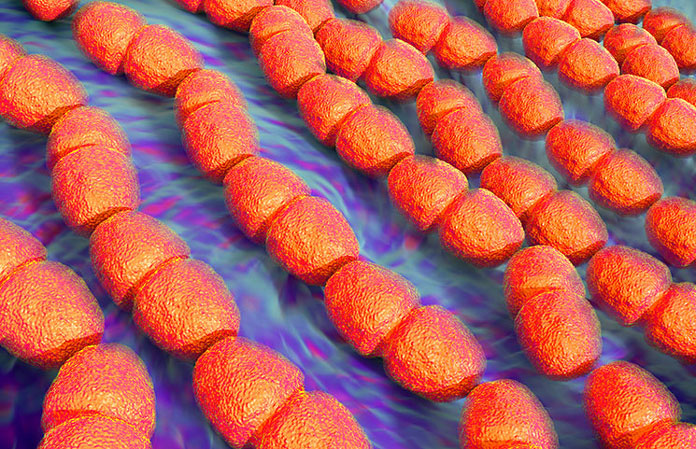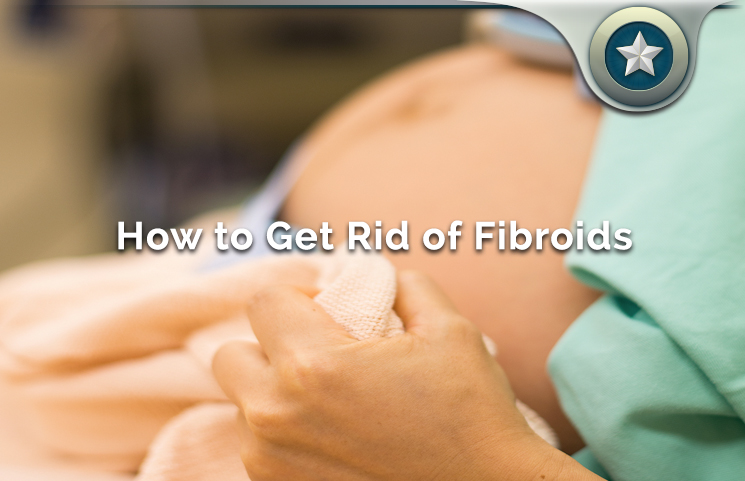Women experience several issues in their reproductive systems throughout their life and uterine fibroids are one of them.
A fibroid is a lump that appears and grows on the muscular layer of the uterine walls. It is a different type of tissue (fibrotic and smoot muscle tissue) growing on top of the normal uterine muscular tissue. They are sometimes referred to as uterine myomas, and they are the most frequent benign (non-cancerous) tumor of the female reproductive system.
The size of the fibroid may vary from very small and imperceptible, all the way to big palpable ones. Likewise, signs and symptom severity is very different from woman to woman. In fact, many fibroids are not diagnosed.
According to some research, the prevalence of fibroids is 20 to 50 percent in women between 15 and 55 years old, being more common among women in their 40s and 50s.
Fibroids Signs And Symptoms
Uterine fibroids are usually not symptomatic. The diagnosis might be made incidentally without the woman knowing there was something wrong, because most of these benign tumors do not cause any signs or symptoms.
However, when symptomatic, the most common symptom of uterine fibroids is pain. Many women suffering from uterine fibroids go to the doctor’s office with complaints of pelvic or abdominal pain.
The second most common symptom of a fibroid is abundant bleeding during the woman’s period. This is particularly notable when women in their 40s and 50s state that their period pattern in previous years was different, and with more moderate bleeding than those being experienced at the moment of the diagnosis. Abundant menstrual bleeding for women suffering from fibroids might lead to complications such as anemia, due to the acute loss of large amounts of blood.
Other signs and symptoms may include a palpable lump on the pelvis, lower back pain, frequent urination, and discomfort during sexual intercourse.

Fibroid Causes
The exact cause of uterine fibroids is yet to be discovered.
However, doctors and researchers have agreed that the influence of estrogen is one major factor for the development and growth of fibroids which explains why these tumors are more common in the final years of the woman’s fertile stage. If a woman experiences her first period at 12 years of age, she will be exposed to high levels of estrogens from that moment on.
When that same woman is 45, she would have been exposed to 33 years of continuous high levels of estrogen in her blood, thus increasing her risk of developing fibroids and making them grow.
The use of combined oral contraception (COA) is not discarded as a cause, or at least an accelerator, of fibroids. After all, COA pills contain a low dosage of estrogen (most commonly ethinilestradiol) keeping regular and steady levels of this hormone in the blood while the pills are used.
Fibroid Treatments
Treatment of uterine fibroids should only be considered when it is highly symptomatic and disruptive of the woman’s personal lifestyle and everyday activities. Given benign tumors that do not cause any harm other than the symptoms we just described, surgical removal is not always indicated. In fact, there are many factors that the clinician has to consider when treating a fibroid on a female patient.
These factors include:
- The medical history of the woman
- How big the fibroids are
- How tolerant the woman is to the variety of medications, procedures and alternative therapies available
- The expectation that the woman has regarding the treatment
- Her own opinion about treatment options
- Whether or not the woman in question is looking forward to get pregnant sometime in the near future
There are several treatment options to get rid of uterine fibroids.
Hysterectomy
This consists of the surgical removal of the uterus. As a surgical intervention, it must be performed by an ObGyn surgeon with experience and expertise. This treatment is recommended for women who want to definitively get rid of uterine fibroids and are not expecting to get pregnant in the future.
The decision of getting a hysterectomy done also has a lot to do with how comfortable the woman feels regarding the procedure. It is only imperatively indicated if the particular fibroid or cumuli of fibroids puts the woman’s life at risk in some way or if all other treatments have failed to produce a satisfactory outcome.
Myomectomy
A Myomectomy is another surgical procedure, but this one is more conservative. It consists of the removal of the myoma, leaving the rest of the uterus intact.
It carries all the risks of any other surgical procedure, but the recuperation period after the surgery is shorter. Women wanting to become pregnant after the myomectomy have to ask their physicians about the risks of pregnancy after a myomectomy.
Natural childbirth will be contraindicated, but a C-section might be viable if the patient and the doctor agree to do a follow-up of the case. However, for women that definitely want to have children in the near or mid-sighted future, neither hysterectomy or myomectomy would be recommended.
Uterine Fibroid Embolization (UFE)
This treatment is performed usually by an interventional radiologist, and both the preparation and the surgical act itself are simpler. UFE consists in an intervention that blocks the irrigation of the fibroid, making it become smaller and smaller until it vanishes.
In other words, the UFE blocks the fibroid from its source of blood by embolizing the main blood vessel that feeds it, making it “starve” and shrink until there is no fibroid left.
This procedure is indicated when a woman is experiencing signs and symptoms, particularly when bleeding induces anemia or other complications that put the woman’s risk in life. Although it is perfectly possible to become pregnant after getting a UFE performed, risks associated with pregnancy viability after this procedure are not well known due to the novelty of the intervention and lack of research.
Hormonal Treatment
Hormones that interact and block the effects of estrogens might also be indicated by clinicians for women experimenting with signs and symptoms of uterine fibroid disease.
Given that the pathogenesis of fibroids is somewhat related to constant, long-lasting exposure to estrogens, an estrogen-blocking approach is frequently used when the doctor does not consider surgery to be necessary, or when the woman desires to try out alternative approaches to fibroid treatment.
The most popular estrogen-blocking drugs used are those containing progestogens or Danazol. They have been repeatedly tested for safety and effectiveness, so they are a widespread alternative to surgery. The main purpose of this treatment is to stop the growth of the fibroid.
Other hormones such as Gonadotropin-releasing hormone agonists (GnRH agonists) are also used to induce a menopause-like hormonal environment in the body, lowering total levels of available estrogen in blood and thus stopping the fibroid from growing further.
In the case of natural menopause, existing tumors experience atrophy and shrink. In this medicine-induced menopause state triggered by GnRH agonists, the same thing occurs. Some surgeons indicate GnRH agonist therapy prior to the surgery in order to make the overall procedure easier, faster and with lower levels of risk.
Recovery after hormonal treatment in terms of fertility is a delicate matter, but it is possible. Women wanting to get pregnant after the treatment are highly advised to accept this type of hormonal therapy in order to relieve symptoms without putting their family planning and fertility at much risk.
However, keep in mind that a subsequent consultation with a fertility expert is highly advisable after this type of therapy.

Non-Steroidal Anti-Inflammatory Drugs
Non-steroidal anti-inflammatories (NSAID) are used in women who do not have surgical criteria but experience pelvic pain during their periods due to the symptomatic fibroid.
These drugs are available in most drugstores and do not require a prescription. Some of them are Diclofenac (Cambia, Cataflam, Voltaren, Zorvolex), Ibuprofen (Advil) Ketoprofen, Ketorolac (Toradol) and Naproxen (Aleve, Anaprox, Naprosyn).
Side effects of these drugs may include nausea, vomiting, stomach pain (especially for women suffering from gastritis or gastroesophageal reflux), diarrhea, rash, headache and dizziness.
I Have A Uterine Fibroid – Is It Bad?
Like we repeatedly stated throughout this resource, uterine fibroids or myomas are very frequent among women of fertile ages, particularly those in the fourth and fifth decades of their life. However, the severity of the condition is determined by several factors including base diseases such as associated gynecological diseases, metabolic issues such as diabetes and arterial hypertension.
Furthermore, what determines the urgency to perform any of the procedures or treatment schemes described above will be the testimony of the patient itself. If there is a diagnosis, but no signs or symptoms at all, then conservative measures like taking NSAIDs when feeling pain, as well as bed rest when bleeding is too intense can be enough.
If you do have significant bleeding, if you’re experiencing dizziness, fatigue and nausea, or if pelvic pain disrupts your everyday life, then a visit to the doctor for a planned intervention is highly suggested.
It is important to acknowledge that even though fibroids or myomas are labeled as tumors, they are 100% benign and there is no chance whatsoever for them to become malignant. Fibroids and myomas will not develop into gynecological cancer, so the word “tumor” should not be taken as a somber prognosis.









